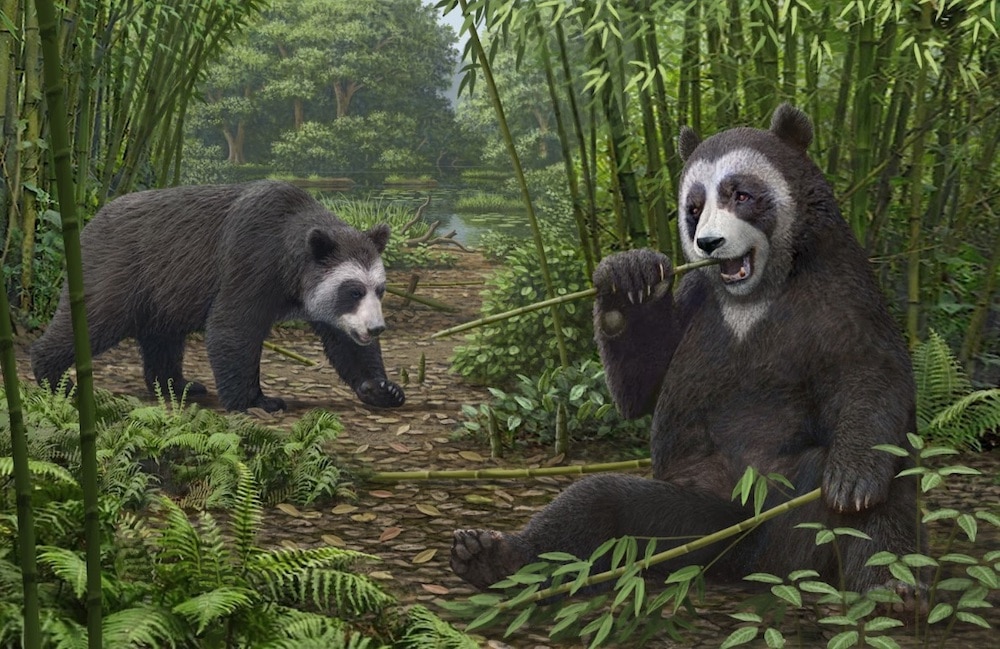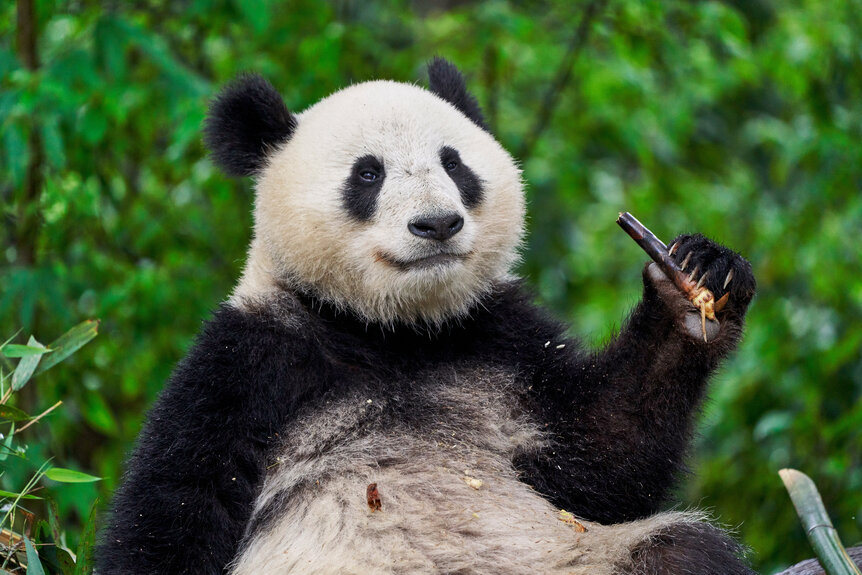Create a free profile to get unlimited access to exclusive videos, sweepstakes, and more!
The secret to the panda's un-bear-like life of bamboo-eating luxury is all in the wrist
We give pandas two (sort of) thumbs up!

Kung Fu Panda introduced audiences to Po (Jack Black), a clumsy panda obsessed with martial arts who — spoiler alert — becomes the famed Dragon Warrior. In the movie, everyone doubts Po, confident in their surety that he can’t possibly be a great warrior. In the end, he proves them wrong, but they had every reason to believe in their convictions. Pandas are, after all, among the most slow-moving and docile animals on Earth.
If you’ve grown up always having been aware of pandas, it doesn’t seem all that strange on its surface. Of course they’re calm and maybe a little clumsy, they’re pandas. However, when you really step back and look at them, it is bizarre. They are bears after all. Their body plan, including front-facing eyes, sharp claws, and elongated sharp teeth have all of the hallmarks of a vicious predator. Yet, they’re comfortable lounging in bamboo forests and eating until they fall asleep.
Understanding how that happened was the focus of a new paper by Xiaoming Wang from the Department of Vertebrate Paleontology at the Natural History Museum of Los Angeles County, and colleagues, recently published in the journal Scientific Reports. The paper hinged on the fossilized remains of an ancestral panda species and an unusual adaptation which modified a wrist bone, transforming it into a false thumb.
“In my estimation, it’s a very critical adaptation. For the panda to specialize on bamboo, the most important consideration is consuming large quantities on a daily basis,” Wang told SYFY WIRE.
The fossilized remains of the ancestral panda, dubbed Ailurarctos, hail from between 6 and 7 million years ago and were found in a fossil site in south China, bordering Vietnam. There, scientists found a fossilized wrist bone which served as a false thumb, similar to the modern panda’s sixth digit, but longer.
Around the same time, roughly 7 million years ago, bamboo forests were emerging in the area and the fossil evidence suggests that ancient pandas quickly abandoned their carnivorous life in favor of a slower existence subsisting solely on bamboo. That’s something they couldn’t have done without this change in the structure of their hands.
Pandas don’t have the same digestive adaptations as other herbivores. Where cows have many stomachs which assist with the fermentation and breakdown of foliage, pandas still have digestive systems which largely resemble those of other carnivores. As a result, they have to be able to eat bamboo as quickly and as frequently as possible.
“To be able to manipulate bamboo using their hands is actually quite critical. People may not realize how tough bamboo can be. You can break it down using only the teeth and jaw, but you really need the hand to be efficient,” Wang said.
The existence of the enlarged false thumb in Ailurarctos is a clear indication that they were dedicated to a lifetime of eating bamboo. Wang indicated there is really no other use for the bone. It doesn’t have the same complexity of a human thumb and, in fact, almost gets in the way. While the false thumb is good for grabbing onto bamboo, it poses a problem when pandas need to walk to their next meal site. Scientists believe it’s the balance between these two pressures — eating and walking — that has kept the panda thumb in its stunted state.
“Evolutionarily, if a particular structure is of high importance, it tends to enlarge and be refined. However, the thumb in the panda has never elongated. It has actually shortened slightly. It’s in a very awkward position and is being stepped on all the time. The panda has to achieve some kind of balance,” Wang said.
Pandas have successfully maintained that balance for millions of years, trading in the stress of hunting for a relaxing life of luxury munching on their favorite snack. If you’re a panda looking for a way to live your best life, the secret is all in the wrist.



























